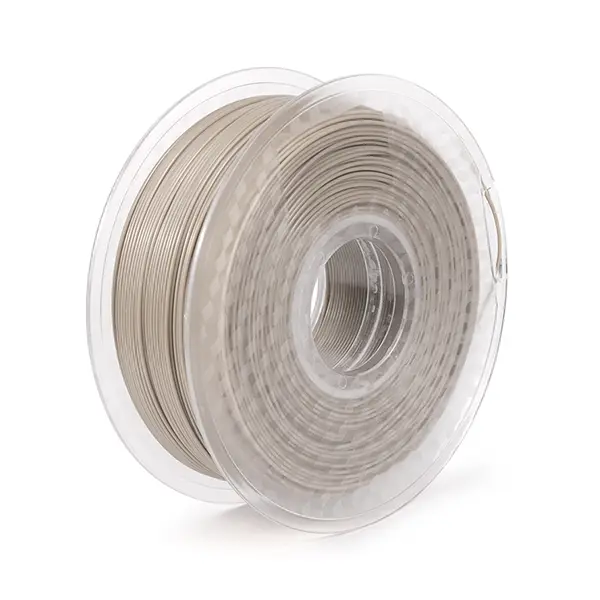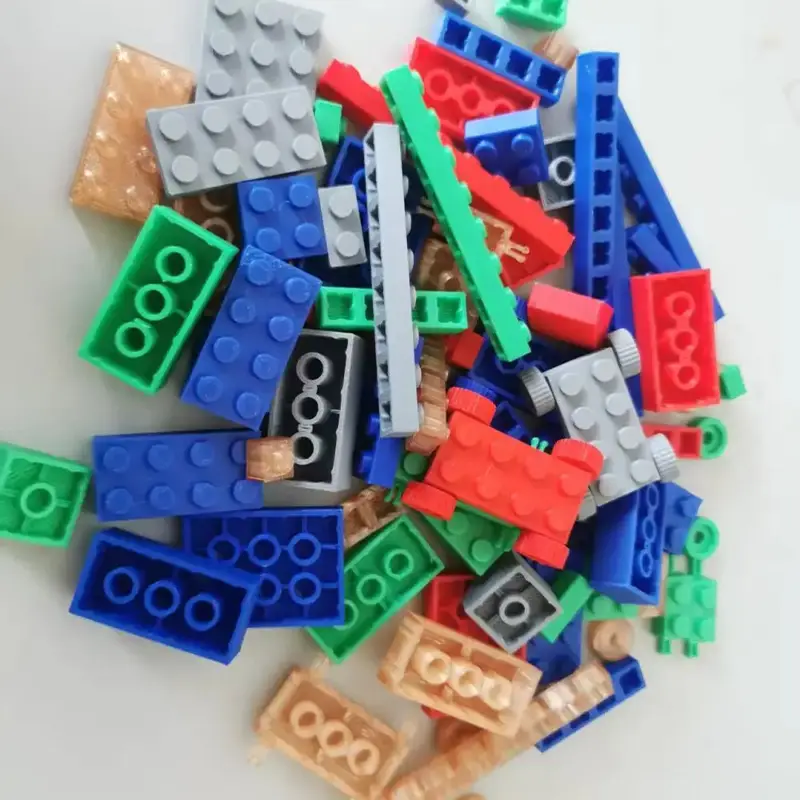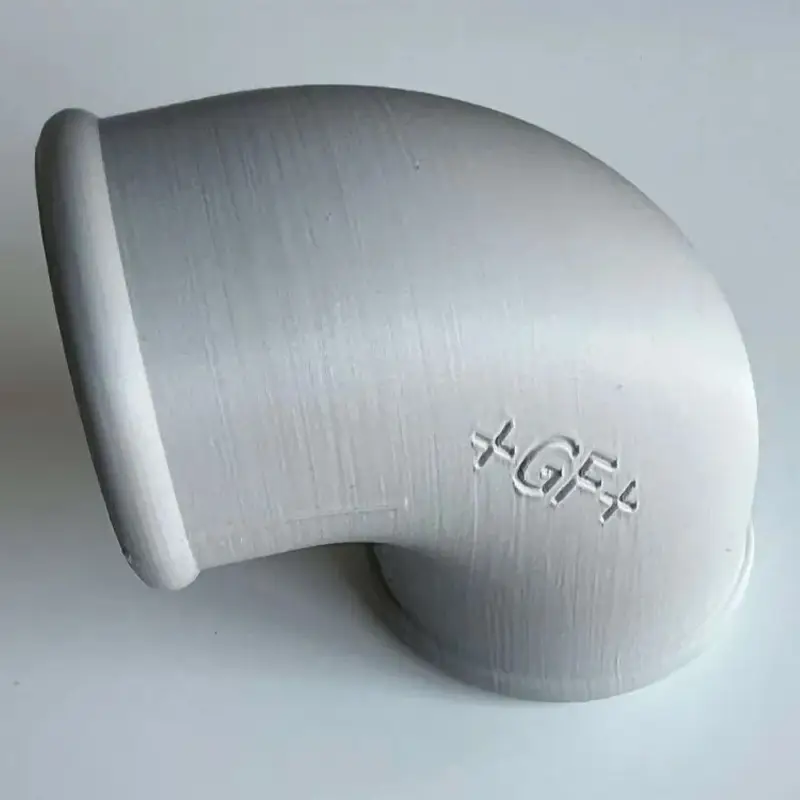Hey there, engineering maverick and manufacturing pro. Let’s cut the fluff. You’re here because you’ve hit the thermal ceiling of everyday filaments. Nylon is tough, PC is strong, but your project demands something… more. Something that laughs in the face of 250°C, scoffs at chemical baths, and meets FDA standards for implantable devices. You’re not just browsing materials; you’re searching for the holy grail of high-performance polymers. Welcome to the big leagues. Welcome to PEEK (Polyether Ether Ketone). This isn’t just another filament—it’s the material that separates prototyping from true, end-use, industrial manufacturing. But here’s the truth: printing with PEEK is like taming a dragon. It’s incredibly powerful, but it will burn you if you don’t know what you’re doing. Ready to learn if you and your projects are ready for the ultimate challenge? Let’s dive into the fiery world of high-temp 3D printing.
Why PEEK Represents the Pinnacle of 3D Printing Materials
Think of the material spectrum like a ladder. PLA and PETG are the first few rungs—great for starters. ABS and Nylon are the middle—strong and reliable. PC and PEI are near the top—exceptional engineering materials. PEEK? It’s the platform above the ladder. For decades, PEEK has been the gold standard in subtractive manufacturing (CNC machining) for the most demanding applications on Earth. Its adoption in additive manufacturing is a testament to 3D printing’s evolution from a hobbyist’s toy to a legitimate industrial tool. When you choose PEEK, you’re not just making a part; you’re making a statement about the performance you expect and the quality you demand.
The Aerospace and Medical Standard Goes Additive
PEEK’s resume is unlike any other plastic. It’s the material specified for critical components inside jet engines, deep-sea oil wells, and the human body. Its ability to maintain structural integrity under continuous high heat, resist brutal chemical attack, and perform with unwavering reliability is why Fortune 500 companies and regulatory bodies like the FAA and FDA have trusted it for years. The fact that we can now 3D print with it is nothing short of revolutionary. It opens the door to complex, lightweight, geometries that were previously impossible or prohibitively expensive to machine.
When Your Application Demands Absolute Performance
So, when do you actually need PEEK? Ask yourself these questions:
- Does my part need to function continuously above 200°C (392°F)?
- Will it be exposed to harsh chemicals, steam, or high-pressure fluids?
- Does it require supreme mechanical strength and stiffness at elevated temperatures?
- Is it for a medical application requiring biocompatibility (ISO 10993 USP Class VI)?
If you answered “yes” to any of these, then common filaments will fail you. PEEK is your answer.
PEEK Unpacked: The Superstar of High-Performance Polymers
What exactly gives PEEK its superhero status? It all comes down to its unique chemical backbone and the incredible properties that result from it.
Chemical Structure: The Source of Its Superpowers
Without getting too deep into organic chemistry, PEEK’s strength comes from its rigid polymer chain, fortified by strong aromatic rings and ketone groups. This structure is incredibly stable, requiring massive amounts of energy (heat) to make it move and flow. This inherent stability is the root of its high glass transition and melting temperatures, its superb mechanical strength, and its legendary resistance to degradation.

Key Properties That Make PEEK Exceptional
| Property | PEEK’s Capability | Why It Matters |
|---|---|---|
| Heat Resistance | Continuous use up to 250°C (480°F) | Parts won’t deform in high-temp environments (e.g., under-hood automotive, aerospace). |
| Chemical Resistance | Resists a wide range of chemicals, oils, and steam | Ideal for chemical processing, oil & gas, and automotive fluid systems. |
| Mechanical Strength | High strength and stiffness, even at elevated temperatures | Replaces metal in many applications, reducing weight without sacrificing performance. |
| Biocompatibility | ISO 10993 compliant for implantable devices | Enables custom surgical guides, implants, and instruments that can be sterilized. |
| Wear Resistance | Low coefficient of friction and high abrasion resistance | Perfect for bearings, seals, and other high-wear components. |
The Real-World Power of PEEK: Industries Transformed
PEEK isn’t a theoretical material; it’s solving real-world problems right now across the most demanding sectors.
Aerospace & Aviation: Lighter, Stronger, Hotter
Here, every gram counts. PEEK is used to create lightweight brackets, ducting, and cable management components that replace metal, reducing fuel consumption. Its high performance in aircraft interiors also improves fire, smoke, and toxicity (FST) compliance, making cabins safer.
Medical & Healthcare: Bio-Compatible Innovation
This is where PEEK truly shines. Its biocompatibility allows for the creation of patient-specific implants that are strong, lightweight, and radiolucent (they don’t block X-rays, allowing doctors to see healing bone). From spinal cages to cranial implants, PEEK is revolutionizing personalized medicine.
Automotive & Energy: Performance Under Pressure
Enduring high temperatures near batteries and motors, PEEK components are vital in electric vehicles. Within traditional engines, they perform reliably as seals and bearings. Proving essential in the energy sector, PEEK parts are also used in subsea equipment and valves that handle corrosive, high-temperature fluids.
Conquering the Beast: The PEEK Printing Challenge
Let’s be brutally honest: printing PEEK on a standard desktop FDM printer is a recipe for frustration and wasted money. This material demands respect and specialized equipment.
The Hardware Non-Negotiables
The Heated Chamber: Your Number One Priority
A heated build chamber is not a nice-to-have for PEEK; it is an absolute requirement. You need an ambient temperature of 120-150°C to prevent the part from cooling too quickly. Rapid cooling causes massive crystallisation and warping stresses, leading to layer splitting and print failure. An industrial-grade printer with a fully enclosed and actively heated chamber is the only option.
Nozzle and Hotend: Withstanding Extreme Heat
You’ll need an all-metal hotend capable of reaching and maintaining 380-420°C consistently. A standard PTFE-lined hotend will break down and off-gas toxic fumes. The nozzle must be hardened steel or, better yet, ruby-tipped. PEEK is abrasive and will quickly destroy a standard brass nozzle, leading to inconsistent extrusion and failed prints.
The Printing Environment: It’s All About Control
Filament Drying: A Battle Against Moisture
PEEK is notoriously hygroscopic. Even a few hours of exposure to ambient air can load it with moisture, which turns to steam in the hotend, causing terrible layer adhesion, bubbling, and a weak, foamy surface finish. You must dry PEEK filament for 6-8 hours at 120-150°C immediately before printing, and often print from a heated drybox to prevent reabsorption.
Bed Adhesion and Warping: Taming the Stress
A heated bed set to 120-150°C is essential. The surface must be meticulously prepared. Garolite (FR4) or double-sided PEI sheets, scuffed with high-grit sandpaper and cleaned with isopropyl alcohol, are common choices. A poor first layer guarantee a failed print. Enclosures must be kept closed throughout the entire process to maintain a stable, hot environment.
Why Partner with a Pro for PEEK Manufacturing?
Given the extreme challenges and high cost of PEEK filament, attempting this in-house only makes sense if you have a constant, high-volume need and have invested in industrial-grade equipment.
Beyond Desktop Printing: The Industrial Reality
For most businesses, the smarter, faster, and more reliable path is to partner with an expert OEM manufacturing service like Yuesun 3D. We’ve already made the multi-million dollar investment in the industrial Stratasys FDM or similar high-temperature printers required to process PEEK reliably. Our engineers have spent years perfecting the parameters for build orientation, chamber temperature, and print speed to ensure optimal crystallinity and mechanical properties in the final part.
The Yuesun 3D Advantage: Expertise and Equipment
When you partner with us, you bypass the steep learning curve and capital expenditure. You get access to:
- Industrial HT FDM Printers: Machines built specifically for PEEK, PEKK, and ULTEM.
- Controlled Environments: Print chambers that maintain perfect temperature stability.
- Material Science Expertise: Engineers who understand how to coax the best performance out of this demanding polymer.
- Post-Processing & QA: Professional finishing, annealing, and rigorous inspection to meet critical tolerances.
This allows you to focus on your design and application, confident that the manufactured part will perform as intended.
Conclusion: Is PEEK the Right Choice for You?
PEEK filament is the undisputed champion of high-performance 3D printing materials. Its combination of unparalleled heat resistance, mechanical strength, and chemical inertness makes it the only choice for the most demanding applications across aerospace, medical, and automotive industries.
However, it is not a material for the faint of heart or the lightly equipped. Success with PEEK requires industrial-grade hardware, a deep understanding of material science, and meticulous process control.
For your mission-critical projects, the most strategic decision is often to collaborate with a specialized manufacturing partner. By leveraging the expertise and advanced infrastructure of Yuesun 3D, you can harness the incredible power of PEEK without the associated risk, cost, and complexity of in-house production.
So, push the boundaries. Design the impossible. And let a professional handle the dragon.
Frequently Asked Questions (FAQs)
1. Can any 3D printer print PEEK filament?
Absolutely not. Printing PEEK successfully requires a professional-grade, industrial 3D printer with an actively heated chamber capable of maintaining temperatures above 120°C, an all-metal hotend that can reach over 400°C, and a hardened steel or ruby nozzle. Desktop printers, even modified ones, are not suitable.
2. How does the cost of PEEK compare to other filaments?
PEEK is in a different cost category altogether. It can be 20 to 50 times more expensive per kilogram than PLA or PETG, and significantly more than Nylon or PC. This is due to its complex chemical synthesis and high-performance properties. This high material cost is another reason why professional handling and high first-pass success rates are critical.
3. Is 3D printed PEEK as strong as machined PEEK?
The strength of a 3D printed PEEK part is highly dependent on print parameters, orientation, and, most importantly, post-processing. When printed correctly with optimal layer adhesion and then annealed (a heat treatment process that reduces internal stresses and increases crystallinity), 3D printed PEEK can achieve mechanical properties that are very close to, and in some cases anisotropicly better than, machined PEEK.
4. What is the difference between PEEK and PEKK?
PEKK (Polyether Ketone Ketone) is a close cousin of PEEK. It has a slightly different chemical structure that gives it a lower melting temperature, making it marginally easier to print. It can also be tailored to have different levels of crystallinity. The choice between them often comes down to specific application requirements like thermal performance, chemical resistance, or cost. Both are considered ultra-high-performance thermoplastics.
5. Do you offer other high-temperature materials besides PEEK?
Yes. At Yuesun 3D, our expertise extends across the family of high-performance thermoplastics. We also work with PEKK, ULTEM (PEI), PPSU, and PPS. Each of these materials has a unique property profile, and our engineering team can help you select the optimal material for your specific application requirements, whether you need higher glass transition temperatures, better FST ratings, or different chemical resistance.



